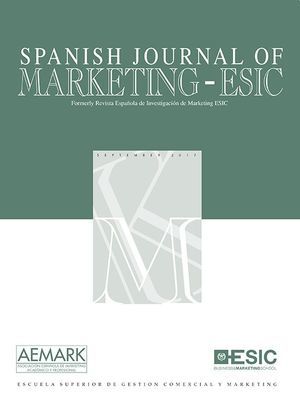El boca a boca constituye una importante fuente de información para los consumidores. Estudios previos han demostrado que es más creíble e influyente que la información comercial que genera la empresa. El desarrollo de las nuevas tecnologías ha provocado cambios importantes en este proceso de influencia interpersonal. Sin embargo, los estudios que analizan el funcionamiento del boca a boca en el contexto electrónico son aún escasos y poco concluyentes. En este artículo se han desarrollado dos estudios en los que se compara la credibilidad e influencia del boca a boca electrónico y tradicional en la toma de decisión. Asimismo, se examina el rol que tiene el grado de participación activa y pasiva del individuo en este proceso de comunicación. Los resultados muestran la gran importancia que está adquiriendo el boca a boca electrónico, llegando incluso a tener una influencia y credibilidad mayor que el boca a boca tradicional. El estudio también constata que la participación activa y pasiva del individuo en el boca a boca electrónico determinan su credibilidad e influencia.
WOM is an important information source for consumers. Previous research has shown it is more credible and persuasive than commercial information. The development of new media has caused important changes in this interpersonal influence. However, few studies have analyzed how WOM works in online environment. This paper compares the credibility and influence of traditional WOM and e-WOM, and analyzes the level of passive and active participation as determinants of e-WOM influence. Two empirical studies show the great importance e-WOM is achieving on decision making. This communication process is more influential and credible than traditional WOM. In addition, we have demonstrated that e-WOM is more credible and has more influence for consumers who usually participate on this communication process.
Esta investigación ha sido financiada por el proyecto ECO2009-13170 del Ministerio de Ciencia e Innovación y por la Fundación Seneca - Agencia de Ciencia y Tecnología de la Región de Murcia (España), bajo el II PCTRM 2007-2010. Asimismo ha sido apoyada por la Beca FPU AP2009-4125 del Ministerio de Educación otorgada al primer firmante.
Autora de contacto: Departamento de Comercialización e Investigación de Mercados. Facultad de Economía y Empresa. Universidad de Murcia. Campus Universitario de Espinardo. 30100 Murcia.





